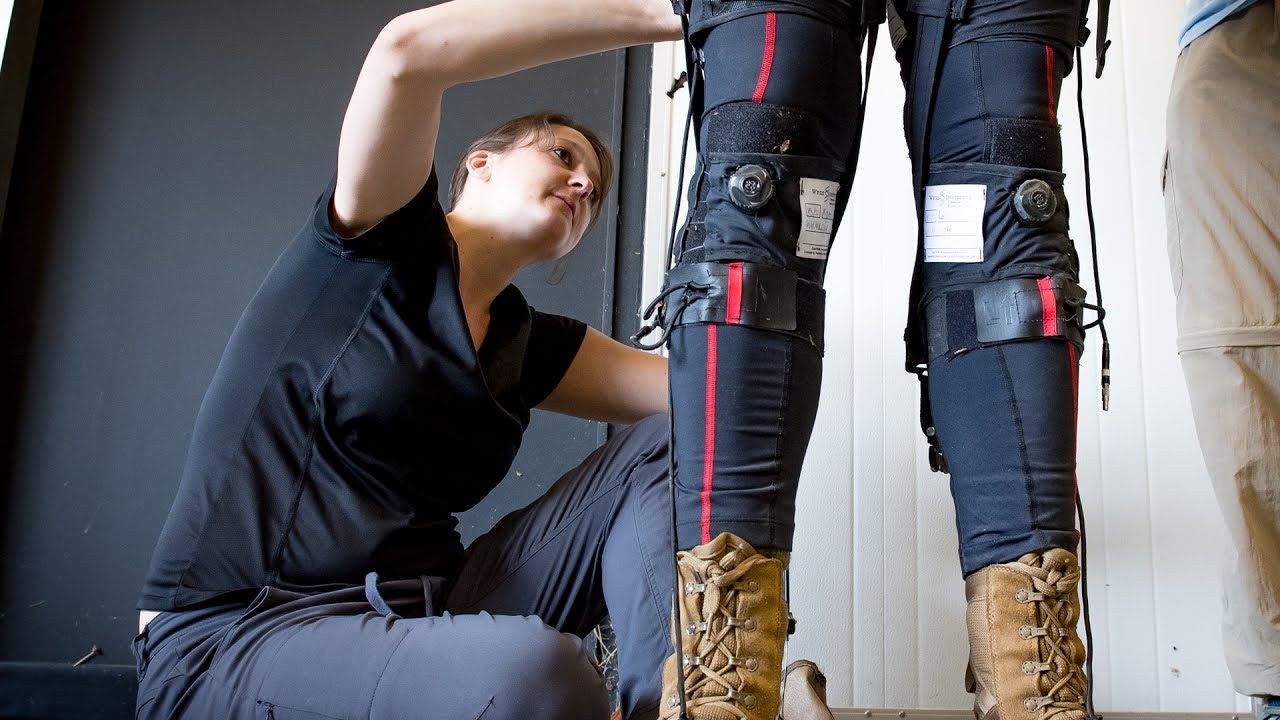Jul 15, 2017
Space Wars: Why the Air Force and Navy Will Fight For Control of the Space Corps
Posted by Klaus Baldauf in category: space
The creation of the U.S. Space Corps should not be seen as a failure on the part of the Air Force.
The creation of the U.S. Space Corps should not be seen as a failure on the part of the Air Force.

According to the report, the US Air Force, Marine Corps, Navy and other special forces are looking to improve troops’ performance by looking at their bodies at a genetic level (stock)
Earlier this year the AirForce successfully tested a helmet that can monitor brain activity and tell if the pilot is feeling stressed or panicked.
Continue reading “Biosensors could give soldiers superhuman fighting abilities” »

ABERDEEN PROVING GROUND, Md. — Thanks to a new “suit” being developed by the DOD-funded Warrior Web program, future Soldiers will be able to march longer, carry heavier gear and improve mental sharpness.
The suit has pulleys and gears designed to prevent and reduce musculoskeletal injuries caused by the dynamic events typically experienced in the Warfighter’s environment.
Continue reading “Prototype exoskeleton suit would improve Soldiers’ physical, mental performance” »
Previously he said 10 years and that was 2016 where he said 2 years until phase 1 human trials.
Is it an impossible dream to find Ponce de Leon’s Fountain of Youth? No! I’ve just attended my 67th reunion at The Harvard Medical School (HMS) and, while interviewing Dr. George Church, I discovered it is no longer science fiction.
Dr. Church, Professor of Genetics at HMS, one of the world’s great scientists, predicts we are about to end the aging process. In the next five years no less! That’s why I say — damn it! I was born too soon.
Continue reading “Does the Fountain of Youth really exist?” »
My new article from Vice Motherboard on liberty and privacy. This is one of my most ambitious philosophical works yet: https://motherboard.vice.com/en_us/article/bjx5y5/liberty-mi…th-privacy #Libertarian
If tech is surveilling us constantly, we need the ability to use it to watch the watchers.
Zoltan Istvan is a futurist, transhumanist, author of The Transhumanist Wager, and a Libertarian candidate for California Governor.
Continue reading “Liberty Might Be Better Served by Doing Away with Privacy” »
Earlier Work
Wernquist early short film “Wanderers” explored many of the same themes about humanities nature to explore and experance, built around beautiful images of space and the cosmos and narration built around an expert from Carl Sagan ‘s “Pale Blue Dot.”
Wernquist described the film as:
Continue reading “A Beautiful Vision of What’s Beyond – The Work of Erik Wernquist” »
For example, in 1994 Calgene won approval to sell the Flavr Savr tomato. To make a Flavr Savr, scientists genetically modified a garden variety tomato with aminoglycoside 3-phosphotransferase II, a compound that kept the fruit from rotting.
The tinkering sabotaged the process that makes tomatoes turn squishy. But the less-squishy tomatoes never did catch on with a skeptical public. The company was later sold to Monsanto.
It changed everything.
Continue reading “This Is How Gene-Editing Will Change The Food You Eat” »

US military reveals $65m funding for ‘Matrix’ projects to plug human brains directly into a computer…
The US military has revealed $65 of funding for a programme to develop a ‘brain chip’ allowing humans to simply plug into a computer.
Continue reading “US military reveals ‘Matrix’ projects to plug brains into a computer” »
Three scientists who have studied extinctions of thousands of species of vertebrates believe so, though others are skeptical of the doomsday-like findings.
“This is the case of a biological annihilation occurring globally, even if the species these populations belong to are still present somewhere on Earth,” Rodolfo Dirzo, the study’s co-author and a Stanford University biology professor, said in a news release.
The researchers analyzed 27,600 species of birds, amphibians, mammals and reptiles — about half of all known vertebrate species — and found that 8,851 (about 32 percent) have seen declining populations and shrinking areas of habitat. A more detailed analysis on 177 mammal species found that more than 40 percent have experienced significant drops in population. The findings, the study says, mean that billions of animal populations that once roamed the Earth are now gone.
DARPA’s quest for high-bandwidth brain-computer interfaces (BCIs) has a new partner in Paradromics, which will be leading one of the agency’s six BCI-development consortia. This is just one of the projects working to develop a breakthrough BCI right now.
The U.S. Department of Defense has created six consortia to develop brain-computer interface (BCIs) technologies and is backing them up with a $65 million investment. On July 10, the Department chose Paradromics Inc., and neural interface company, to lead one of the six groups.
